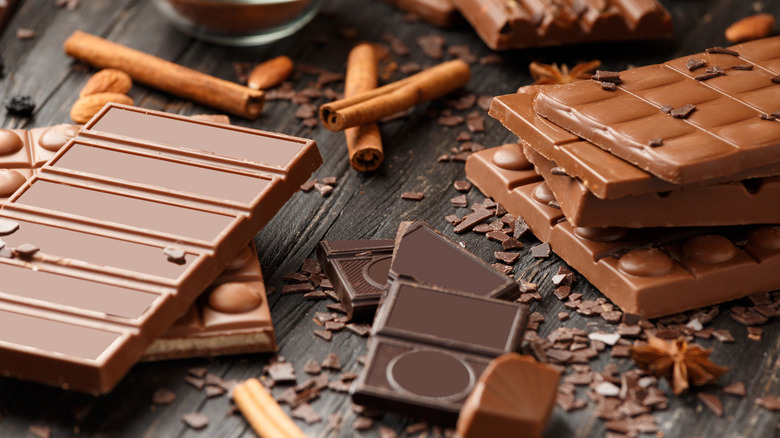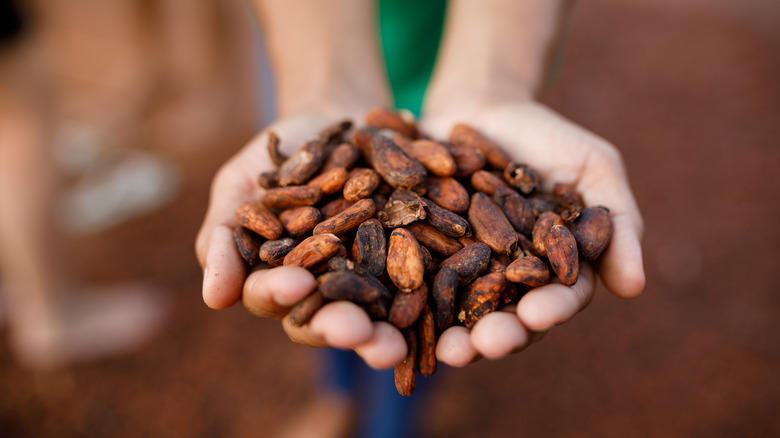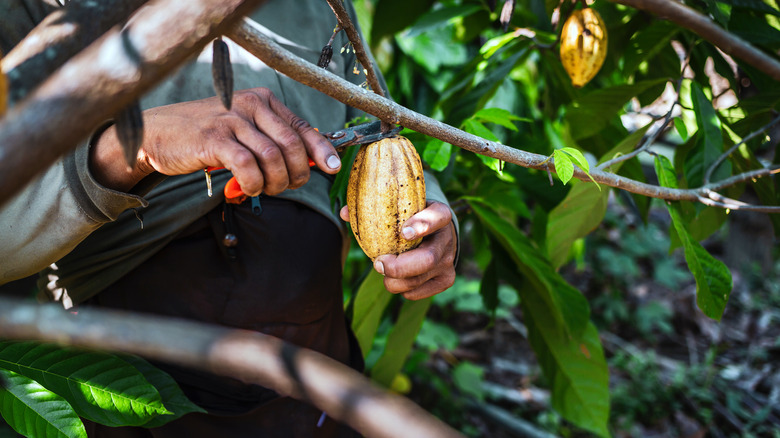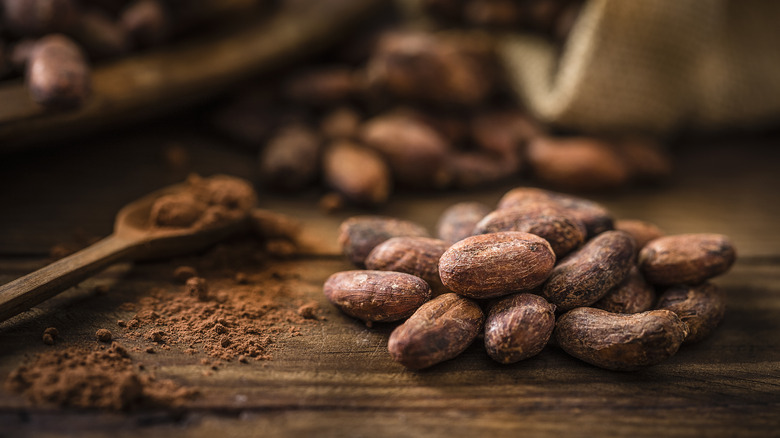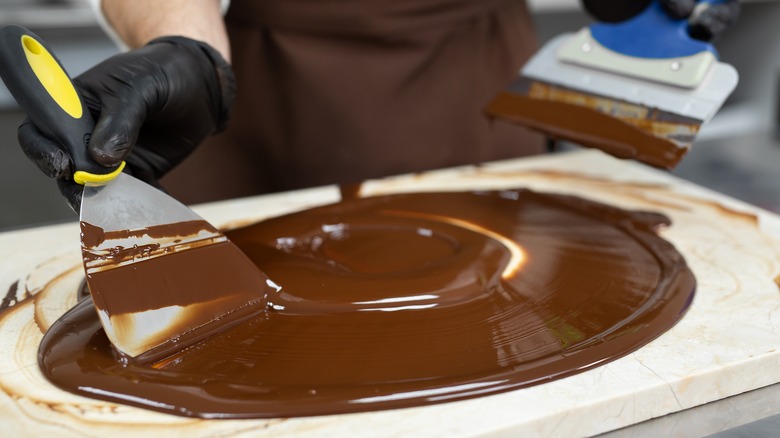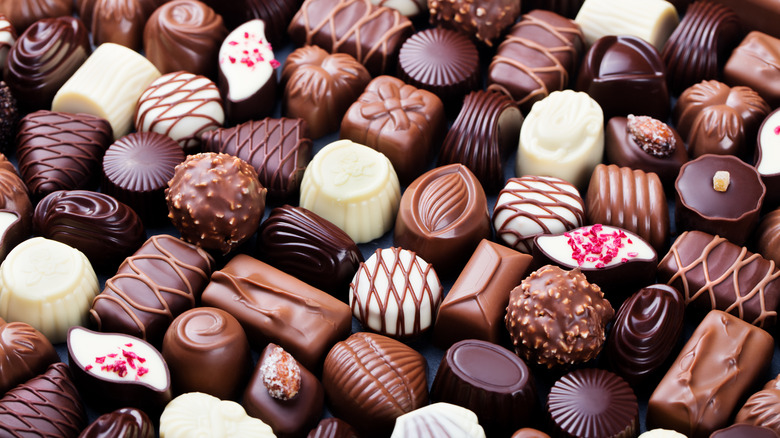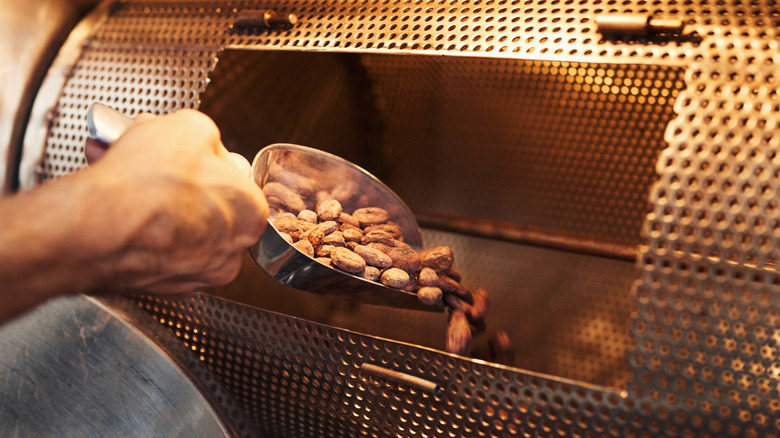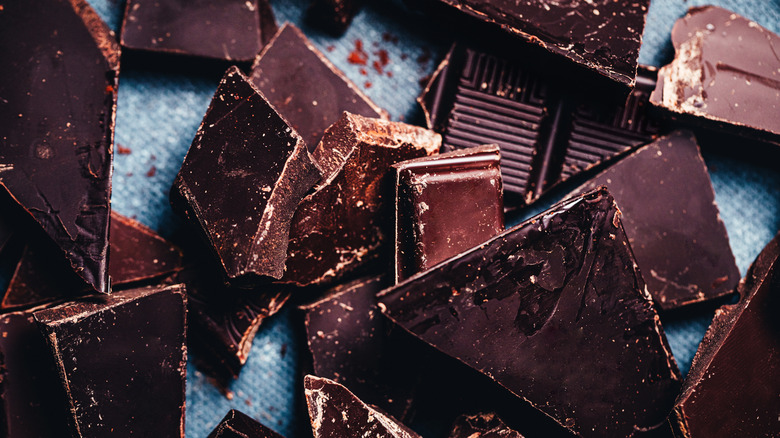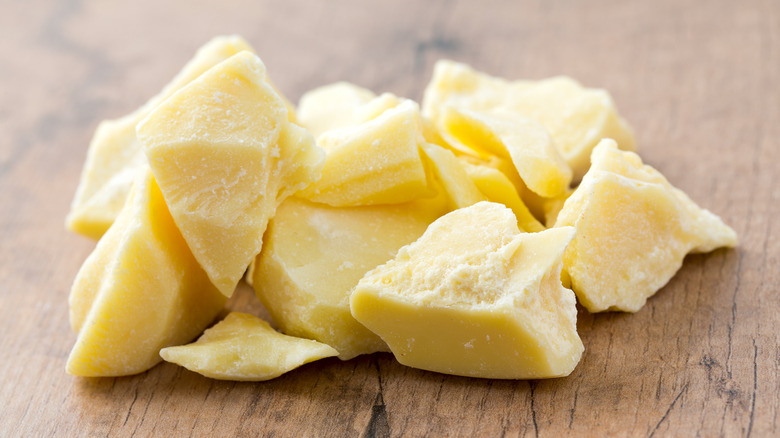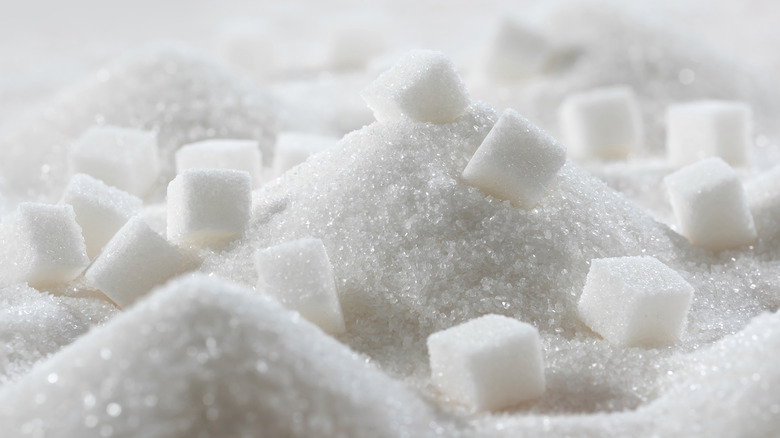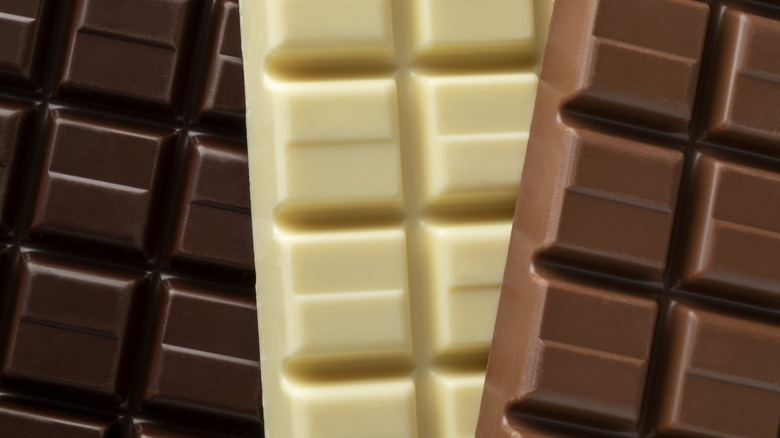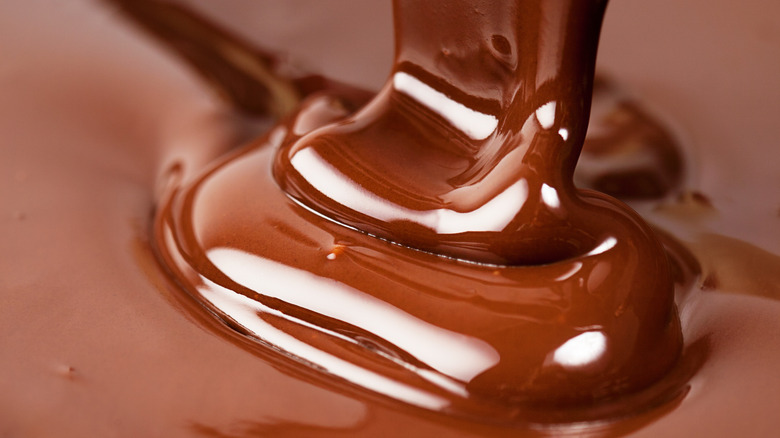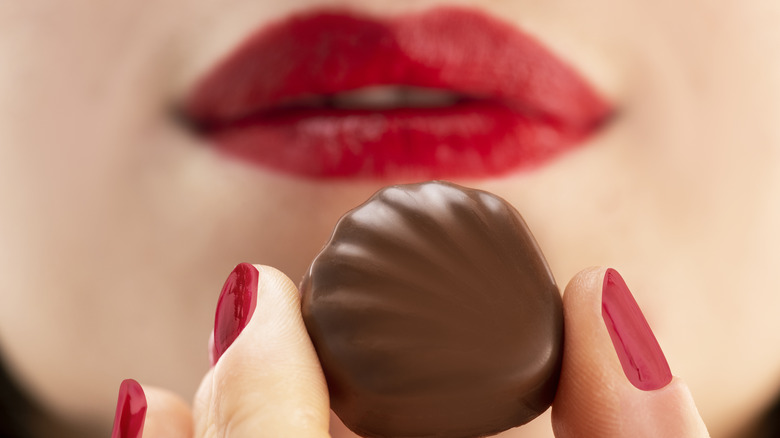12 Reasons Expensive Chocolate Tastes So Much Better Than Cheap Chocolate
In the world of confectionery, few pleasures rival that of sinking your teeth into a bar of your favorite chocolate. This much-loved treat has long stood as a symbol of luxury and pleasure, invoking texture and flavor sensations that linger long after the last bite. Yet, not all chocolate is created equal. Have you ever noticed that the taste experience can vary vastly from brand to brand? While a glance at the price tag might cause hesitation, those who have savored the velvety richness of high-end chocolate understand what sets it apart.
But what is it that elevates pricier chocolate to new levels of deliciousness? Join us as we enter the intricate world of chocolate craftsmanship to uncover the secrets behind expensive chocolate, and why it reigns supreme. From the meticulous selection of premium cocoa beans to the skilled craftsmanship of chocolatiers, each aspect of production contributes to its superior taste.
There's so much more that goes into crafting the ultimate bar of chocolate than you might have first thought. So, read on to gain a fascinating insight into the dedication and artistry that is essential to the luxury chocolate market. Let's explore why indulging in the finer things in life is always worth it when it comes to chocolate.
1. It uses high quality cocoa beans
Behind every mouth-watering chocolate creation is the humble cocoa bean. But the reality is that there is a huge variety in flavor and quality between different beans. Expensive chocolate sets itself apart by starting with the crème de la crème of cocoa beans.
The journey of high-quality cocoa beans begins in the lush, tropical regions where they are grown. These beans are often sourced from countries in West Africa such as Ghana and Nigeria, where the climate conditions are optimal for cocoa cultivation. Luxury chocolate makers seek out the finest beans, often establishing direct relationships with smaller-scale farmers to ensure the highest standards of quality and sustainability. Cocoa beans can be categorized into bulk and fine varieties, with the latter typically yielding fewer seeds per cacao pod, and therefore requiring more work when it comes to extracting the beans. Producing the very best beans is incredibly labor-intensive for growers, who many argue should be paid fairly for their work.
But what makes fine cocoa beans so special? It's all about flavor. Premium fine cocoa beans boast more complex flavors, with notes that range from fruity and floral to nutty and spicy. They also tend to be far less bitter than bulk cocoa varieties. Their unique characteristics can be influenced by how beans are dried, fermented, and roasted, so producing them just the right way takes a lot of skill.
2. The cocoa beans may come from a single origin
Unlike mass-produced chocolate that blends beans from various regions, single-origin chocolate is crafted using cocoa beans sourced from one specific location. This allows chocolatiers to showcase the unique flavors and characteristics inherent to that particular terroir (the unique features of the environment where the cacao is grown).
Each origin will result in beans with a distinct flavor profile, influenced by factors such as soil composition, climate, and altitude. This means that chocolate made with single-origin cocoa beans will feature more unique and complex flavors than multiple-origin bars. Depending on where their beans were sourced, there is a vast diversity in the taste of different single-origin chocolates, so it can be fun to sample different brands and learn which flavor notes you enjoy most.
Single-origin chocolate also offers a stronger connection to the land and the people who grow the cocoa beans. Some of the best fair trade chocolate is made by makers who focus on single origin cacao and work closely with farmers, fostering relationships built on trust and mutual respect, and overseeing the entire process from bean to bar. By knowing exactly where the beans are coming from, they can ensure high quality while supporting sustainable farming practices and fair wages for growers.
3. The beans may be organic
In the pursuit of chocolate excellence, some chocolatiers prefer to craft their products using organic cocoa beans. Just like organic fruits and vegetables, organic cocoa beans are grown without the use of pesticides, herbicides, or synthetic fertilizers, producing what many consider to be a cleaner and more natural product.
The decision to go organic isn't just about meeting a trendy consumer demand. Instead, it can also be a commitment to environmental sustainability and the well-being of both farmers and consumers. Organic cocoa farming practices help to promote biodiversity, protect soil health, and conserve water resources. Conventional, non-organic cocoa beans are also amongst the crops highest in pesticide use, so buying organic is potentially worth it if you want to eliminate the possible health risks that come with pesticide consumption.
In the U.S., you can be sure your chocolate is organic if you see the USDA Certified Organic symbol on its packaging. But what does organic certification mean for the flavor of chocolate? Well, many chocolate connoisseurs claim that the organic variety has a more enjoyable, smooth texture and complex taste than its conventional counterpart. You may want to see for yourself, but it seems that buying organic is often a win-win!
4. There's more craftsmanship involved
Craftsmanship plays a vital part in premium chocolate production, helping to distinguish it from mass-produced alternatives. Industrial chocolate-making typically relies on automated processes for efficiency, but luxury chocolate is more likely to be made by hand, with skilled chocolatiers overseeing every step of the production process.
From bean to bar, every stage requires precision and expertise. Chocolatiers carefully select and roast cocoa beans, using precise methods to achieve the perfect flavor. Then, they meticulously grind and refine the resulting cocoa nibs to make a smooth cocoa liquor, which they then combine with other ingredients such as cocoa butter and sugar, before a refining process called conching takes place. Conching reduces the size of the particles in the chocolate, making it super smooth. Finally, the chocolate is tempered, a step that involves heating and cooling the chocolate, stabilizing the fat molecules to give the result a distinctive shiny look and clean snap when it's broken.
When all these steps are carried out to perfection, the result is a product that's superior in quality and taste. That craftsmanship extends beyond the chocolate-making process itself and may be evident in the attention to detail in packaging and presentation, with luxurious wrappers and elegant designs reflecting the care that goes into each product. This further enhances the whole experience of eating artisan chocolate.
5. There's a wider variety of flavors
Many high-end chocolate brands offer a dizzying array of flavors that go far beyond the standard milk, semi-sweet, and dark varieties found on many supermarket shelves. Artisan chocolate makers will often experiment with additional ingredients, from nuts and fruits to spices and herbs, to create intriguing and delicious flavor combinations. Whether it's a hint of sea salt to enhance the sweetness of caramel or a touch of chili to lend a fiery kick, these added elements can make the chocolate-eating experience even more enjoyable.
Perhaps more importantly, the beans themselves contribute to the variety in flavor amongst premium chocolate, even before extra ingredients are added to the mix. Chocolate made with beans sourced from one country or region might taste completely different compared to those from another locale. In an interview with Perfect Daily Grind, chocolate expert Spencer Hyman states cacao that is grown in Madagascar typically "tastes like berry or citrus", while varieties grown in Papua New Guinea more often have a "smoky characteristic because of how they dry it." Moreover, many consider Ecuador to be the home of the world's best chocolate, where a rare type of bean known as Arriba is produced and is prized for its sweet and fruity flavor notes.
6. The beans are roasted to perfection
One of the most important parts of the chocolate-making process is roasting the beans. This is not the easiest skill to master and requires plenty of precision and expertise. Skilled chocolatiers carefully control factors such as temperature, roasting time, and airflow to achieve the desired flavor profile, delicately balancing sweetness and bitterness.
Before roasting, the beans have typically been fermented and dried, a step that is also essential for developing the flavor and aroma of the beans. Then, during roasting, the beans undergo the Maillard reaction, where heat causes the beans to darken, soften, and bring out a range of complex flavors and aromas. It's a delicate balancing act, as roasting the beans for too long or at too high a temperature can result in a burnt, acrid taste. Meanwhile, under-roasting can leave the beans tasting too bitter and earthy.
Experienced chocolatiers rely on sight and smell to gauge the progress of the roasting beans. This means that the process can be monitored much more closely than in automated mass chocolate production, with adjustments to the temperature and airflow made as needed to ensure an even roast and optimal flavor development.
7. It has a higher percentage of cocoa
Another common characteristic of expensive chocolate is its higher cocoa percentage. Unlike cheaper alternatives that may skimp on cocoa in favor of sugar and fillers, premium chocolate prioritizes the star ingredient — cocoa — resulting in a more intense flavor.
The cocoa percentage of chocolate will vary depending on the variety, namely whether it is white, milk, or dark chocolate. The often untold truth of white chocolate is that it doesn't contain any cocoa solids, but luxury varieties should still boast a high cocoa butter content. When it comes to milk chocolate, in the U.S., it must contain at least 10% cocoa solids. However, U.K. chocolate brand Hotel Chocolat claims that this percentage should be much higher for consumers to experience the full flavors of the beans. Its milk chocolates have a cocoa percentage of between 40-50%.
Dark chocolate has the highest cocoa percentage of all the varieties, starting at a minimum of 43%, though other manufacturers craft bars with around 70% up to a super chocolatey 100% cocoa solid content. With less sugar and fewer additives, dark chocolate offers the best way to explore the rich flavors of cocoa beans. Furthermore, cocoa is rich in antioxidants and flavonoids, which have been linked to various health benefits (though these claims are sometimes overblown), including improved heart health and nerve function (via Antioxidants & Redox Signaling). Choosing chocolate with a higher cocoa percentage can be a healthier way to indulge your sweet tooth.
8. The type of oils or fats used in production affects taste
When it comes to making chocolate, the type of fats used in the process can significantly impact the taste and texture of the final product. While many mass-produced chocolates rely on cheaper vegetable oils such as soy or palm oil to cut costs and bulk up chocolate bars, premium chocolate makers more often opt for quality cocoa butter that enhances flavor and smoothness.
Cocoa butter, which is extracted from cocoa beans during the chocolate-making process, is the preferred fat for high-end chocolate. Known for its smooth texture, cocoa butter contributes to the creamy melt-in-your-mouth experience that is characteristic of premium chocolate. It also provides a unique, subtle flavor that is often described as slightly nutty and even floral, both of which flavors pair wonderfully with the richness of the cocoa solids.
Though using vegetable oils may be more economical for larger-scale chocolate makers, it more often results in a product that lacks the flavor and luxurious mouthfeel of cocoa butter. Because these oils have a higher melting point than cocoa butter, they also take longer to melt in the mouth, making the chocolate experience a little less satisfying.
9. It contains less sugar
Another common find amongst higher-end chocolate brands is a reduced sugar content compared to cheaper alternatives. That's not to say sugar doesn't have a part. In fact, sugar serves an important role in balancing the natural bitterness of cocoa beans, but by adding too much you can easily overwhelm the chocolate's more complex flavors.
Premium chocolatiers will therefore pay close attention to this ingredient and work to use just the right amount of sugar that sweetens while allowing the natural flavors of the cocoa beans to shine through. So, don't mistake less sugar for less flavor, especially when it comes to higher-end brands. In fact, by dialing back the sweetness, premium chocolate highlights the unique notes of the cocoa beans, giving you a more sophisticated and satisfying taste experience.
The amount of sugar that makers add tends to decrease as the cocoa percentage increases, so these two characteristics are likely to go hand in hand when it comes to premium chocolate. For instance, dark chocolate is typically lower in sugar than white or milk chocolate, with some dark bars containing 100% cocoa solids and no added sugar at all. What a way to experience the true flavors of the chocolate!
10. It has fewer additives
Luxury chocolate tends to have fewer additives compared to cheaper alternatives, prioritizing simplicity and purity in its ingredients list. Additives such as artificial flavors, emulsifiers, and preservatives may enhance shelf life or mask inferior ingredients in mass-produced chocolate, but they can also detract from the overall quality and taste of the final product. Minimizing additives allows the natural flavors of the cocoa beans to take center stage, resulting in chocolate that is arguably tastier and more authentic. It also allows chocolatiers to showcase their expertise and craftsmanship, rather than relying on artificial flavors or preservatives to fix imperfections in the final product's taste or texture.
When you strip it back to basics, the finest dark chocolate should be able to evoke an exquisite taste and texture sensation with just three simple ingredients: cocoa beans, cocoa butter, and just a little sugar to balance any bitterness. The same rules apply with milk chocolate, with the best only containing these three basic ingredients along with the addition of milk powder for a creamier taste.
Additives found in lower-quality chocolate typically include lecithin, an emulsifier used to help ingredients stick together, and flavorings like vanilla, which are often there to help make up for a lack of true chocolate flavor in bars with a lower percentage of cocoa solids.
11. It has a smoother texture
One of the most distinguishing features of high-end chocolate is its luxurious, velvety texture. This smoothness is the result of careful processing and craftsmanship, with premium chocolatiers taking extra steps to ensure that their chocolate has a flawless mouthfeel.
We know that the use of pure cocoa butter and the absence of additives contributes to the smoothness of the finest chocolate. But the refining process, known as conching, also plays a critical role in achieving that smooth texture. During conching, the chocolate is continuously mixed, ground, and aerated for an extended period, breaking down the ingredients into much finer particles and allowing it to develop that silky-smooth consistency. According to Chocolate Alchemy, chocolate is at its best when the cocoa solid and sugar crystal particles reach about 15-25 microns in size. Any bigger, and the chocolate might feel gritty in the mouth. If the particles are smaller, this can give the chocolate a strange, gummy texture.
Tempering is another key step in the chocolate-making process. When the chocolate is heated, cooled, and then slightly reheated again, this allows the chocolatier to control the crystallization of the fat molecules. It's the even formation of these crystals that results in wonderfully smooth chocolate. Without proper tempering, chocolate can be dry and crumbly in texture. There is also an art to this process, with white, milk, and dark chocolates all requiring tempering to different temperatures for optimum texture.
12. It leaves a longer aftertaste
An important part of the experience when enjoying any luxury chocolate is that lingering aftertaste. This prolonged sensation on the palate is part of what sets it apart from cheaper alternatives and makes the experience of eating the chocolate all the more enjoyable.
Whether it's the subtle hints of fruit and spice or the lingering notes of earthy or nutty flavors, the aftertaste of premium chocolate is a crucial part of the sensory experience. With mass-produced chocolate, the flavors tend to be less complex and leave your mouth soon after you've swallowed a bite of the chocolate. But, the finest types of chocolate should allow you to experience many different flavors as your portion melts, leaving you with a noticeable and pleasant aftertaste that allows you to savor all that deliciousness.
The extended aftertaste of expensive chocolate is the result of several factors working in harmony. From the quality of the beans and the use of simple, pure ingredients to the carefully monitored roasting and meticulous conching and tempering processes, every step contributes to developing a flavor that leaves a lasting impression.
